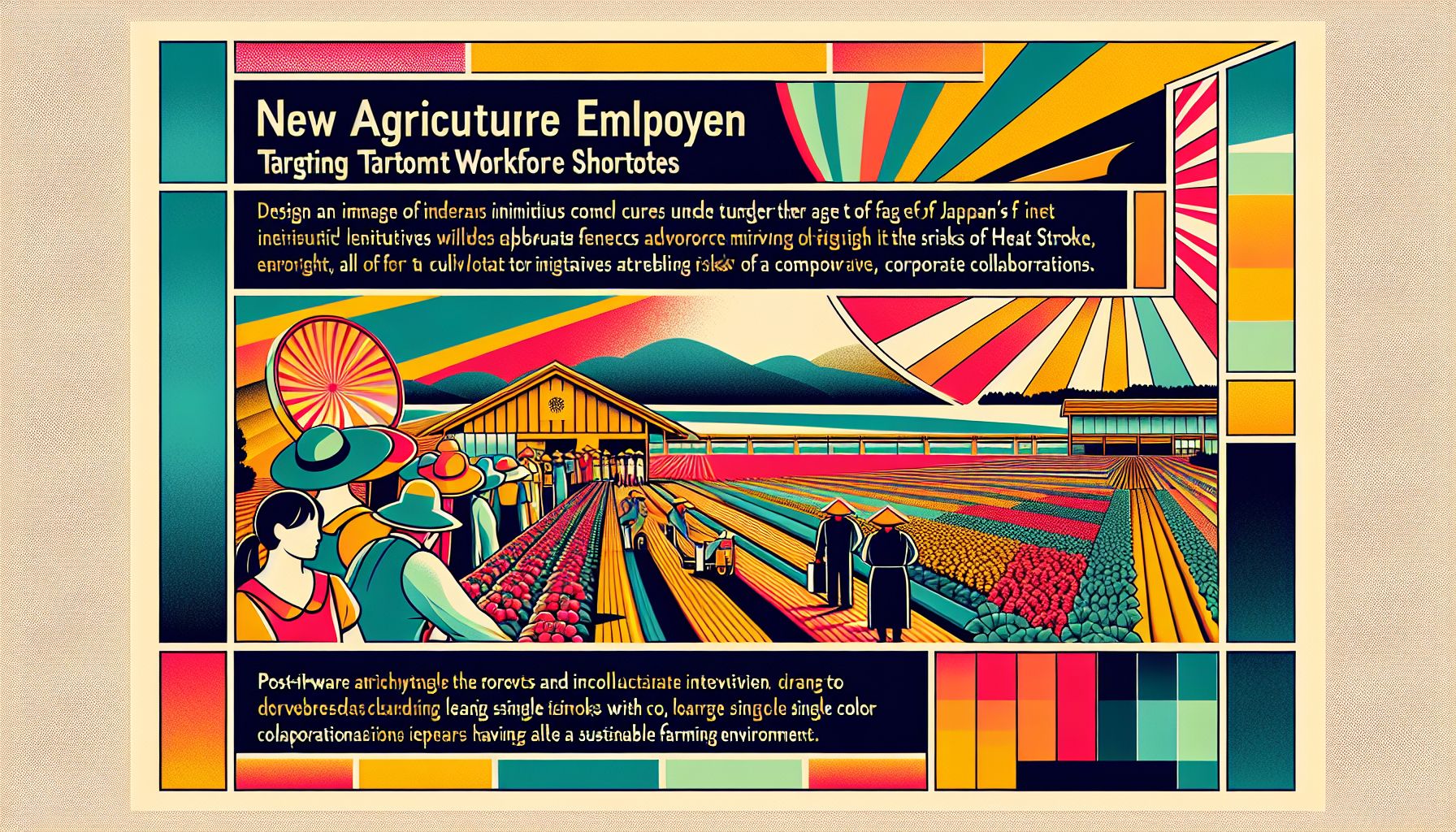Japan's New Agricultural Employment Drive Targets Workforce Shortages

Tokyo, Tuesday, 8 July 2025.
Japan launches initiatives to reduce agricultural workforce gaps by hiring under-49s, addressing heat stroke risks through corporate collaborations, shaping a sustainable farming environment.
Addressing Labor Shortages and Heat Risks
Japan’s Ministry of Agriculture, Forestry and Fisheries recently announced an initiative aimed at hiring individuals under the age of 49 to tackle labor shortages in the agricultural sector. As part of this initiative, the Ministry is collaborating with corporate partners to address the increasing risk of heat stroke among agricultural workers, particularly during the summer months. This collaboration includes distributing preventive beverages and using digital signage in stores to promote awareness of heat stroke countermeasures [1][2].
Strategic Collaborations and Sustainability Goals
The Ministry’s partnership with Otsuka Pharmaceutical and Comerí aims to mitigate heat-related risks, ensuring worker safety and productivity. This move aligns with a broader strategy to foster a sustainable, resilient farming environment in Japan while appealing to younger, tech-savvy generations interested in agriculture as a viable career path [2][3]. Concurrently, the government plans a 2.5 trillion JPY investment over the next five years to boost agricultural productivity [3].
Innovation in Agricultural Practices
Innovative agricultural practices are increasingly important as Japan faces a potential 20% reduction in its agricultural workforce by 2030 due to an aging population. The recent initiatives by the Ministry emphasize not only employment but also the integration of advanced technologies and practices to ensure sustainability. Collaborative efforts with local universities and research institutions are key to these advancements, promising to sustain Japan’s agricultural output in the coming decades [2][4].
Future Outlook and Economic Implications
With these new initiatives, the Ministry hopes not only to fill immediate labor shortages but also to lay the groundwork for long-term sustainability and economic stability in Japan’s agricultural sector. The integration of these strategic days, along with the expected 10% growth in agricultural employment over the next two years, signals a positive trend towards revitalizing Japan’s agriculture. However, continued evaluation and adaptation will be crucial to maintain momentum and address ongoing challenges [5][6].
Bronnen
- www.agrinews.co.jp
- www.agrinews.co.jp
- www.pref.oita.jp
- www.pref.kyoto.jp
- www.sangyokoyo.or.jp
- www.city.fukushima.fukushima.jp